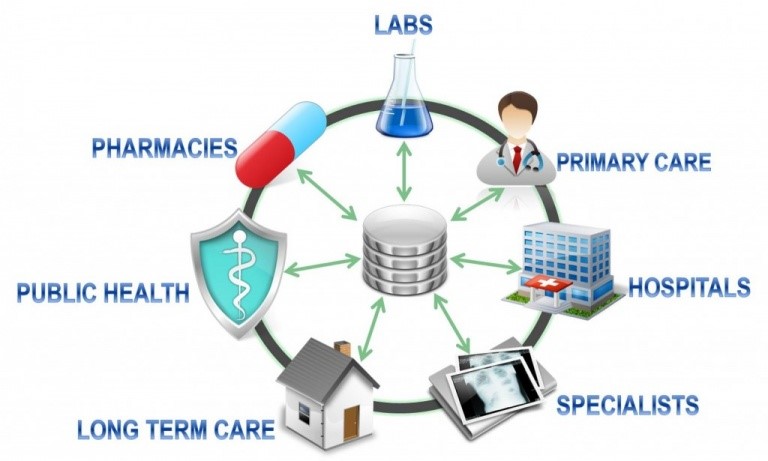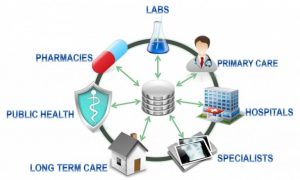The practice of medicine is shifting from episodic patient care to care focused on addressing many broad-based, unique, sometimes esoteric health conditions. Fueling this transition is a new focus on patient reported outcomes and health data registries that aggregate a patient’s information in one central database where it can be accessed by patients, clinicians, and researchers as needed. All of this is based upon the premise that good healthcare delivery requires clinicians to have full information at the point of care.
A patient reported health outcome is an outcome that comes directly from something a patient has experienced. It is used to better understand the efficacy of a particular treatment as perceived by the patient, in contrast to an outcome that has been interpreted by a clinician. There are many efforts underway to develop and test mechanisms for collecting patient-reported outcome data and deploy it to more intelligently improve treatment choices.
Clinical data registries are also emerging as a new way to collect, record and analyze patient information, and the care patients receive. These registries consist of data that is aggregated to reflect patterns among patients who share a common basis and need for care. They harness the power of information technology to capture statistically-relevant, evidence-based patient data on a specific disease that assists in formulating decisions regarding the most optimal approach and best outcomes.
There are many clinical data registries, including those that focus on a disease or condition (e.g., cystic fibrosis), a procedure (e.g., coronary artery bypass grafting surgery) or registries that track the performance of a device (e.g. artificial joints). Information from clinical data registries is used to compare the effectiveness of different treatments for the same disease or condition, and to evaluate different approaches to a procedure or to monitor the safety of implanted devices. This information is also used to support health care education, accreditation and certification.
Approximately 7,000 rare diseases have been identified globally, the majority of which are of genetic origin, although there are non-genetic causes as well. Rare diseases are thought to affect a small percentage of the population. However, the numbers indicate that there are nearly 350 million people worldwide living with a rare disease, about 30 million of them are Americans. It would appear that rare diseases are not so Rare!
Data registries are particularly useful tools to help populations with rare diseases. There are many situations where electronic health records (EHRs), fail to capture the critical data necessary to treat those living with a rare disease and to advance rare disease research. These registries represent a dynamic and efficient alternative, and enable connectivity to laboratories, radiology clinics, transcription services and other clinical systems.
Additionally, patients often receive care from different organizations. Each time a patient participating in a registry sees their health care professional or is admitted to a hospital, detailed data is recorded. Health care professionals then send this encrypted data to the clinical data registry through a secure web portal or from their electronic health record. As data enters the clinical data registry, quality checks are performed to ensure the correctness and completeness of the data. If something is missing or outside of the expected range, registry staff contact the submitting health care professional asking them to review and verify the data.
The social network Patients Like Me recently reported that it has created the largest open registry of idiopathic pulmonary disease (IPF) and much of the most current patient reported data on the disease. The information, which the community shares openly, is providing new clues about the condition and what it is like to live with the disease. This condition affects over 100,000 individuals in the United States.
One cutting-edge start- up company, Pulse Infoframe Inc. has developed a proprietary cloud-based modular software platform that enables the development of many disease registries, including the world’s largest Global Melanoma Research Network. GMRN founded in 2010 has over 3,000 patients in key cancer centers throughout the world. The data from the GMRN patients includes 225 data fields as well as biomarker and genomic information that contributes to numerous research studies and papers and that continue to advance the search for a cure for Melanoma.
A promising area for further development and implementation of computerized disease registries is in the context of health information exchange (HIE) and Regional Health Information Organizations (RHIOS). While still in a nascent phase, organizations involved in an HIE can use a computerized disease registry to effectively identify and manage patients with a particular condition across a region. These systems can usually allow for data extraction from multiple sources, transformation of the data into a common format, and loading of the data into the registry. In general, they also have the expertise to support interfacing from different providers’ health IT systems.
While only a few RHIOs and other HIE organizations currently have computerized disease registries, their use has the potential to support population health-based care across various providers locally and/or regionally and provide an opportunity to better manage many chronic diseases in a larger population. The Agency for Healthcare Research Quality has made a significant investment in projects that are evaluating the impact of computerized disease registries. Three of these projects are:
Santa Cruz County Diabetes Registry which expands an established Web-based, interactive Diabetes Mellitus Registry that provides patient histories and needed tests at the point of care among public, private, and not-for-profit health care providers. It also tracks the diabetes population to identify trends in key indicators of care.
Rural Virginia eHealth Collaborative : Exexamines automation of the continuity of care record for use in patient referrals, hospital admission, and hospital discharge; e-prescribing in physician practices, hospital discharge medications, and long-term care facilities with links to community pharmacies; and disease registries for managing preventive care interventions and chronic diseases.
Colorado Associated Community Health Information Exchange (CACHIE): which uses computerized disease registries as data sources in its interoperable quality information system developed for a collaborative network of community health centers that permits real-time and synchronous quality reporting to inform patient care and quality interventions.
It is a sea change in healthcare when we incorporate patient input to make critical health treatment decisions. Patient Reported Outcomes work and the building of registries that solicit the patient experience and provide health care professionals and researchers with first-hand information about people with certain conditions, to increase our understanding, ensures that this complete information at the point of care will shape the future care for so many individuals who deal with serious chronic conditions, as well as rare and orphan diseases. The value of this knowledge cannot be understated and must be utilized as soon as possible.








Good and important work, Nancy: and so important that someone with your passion for patients is involved.
Thanks Mike. This is a very important area and not well understood.